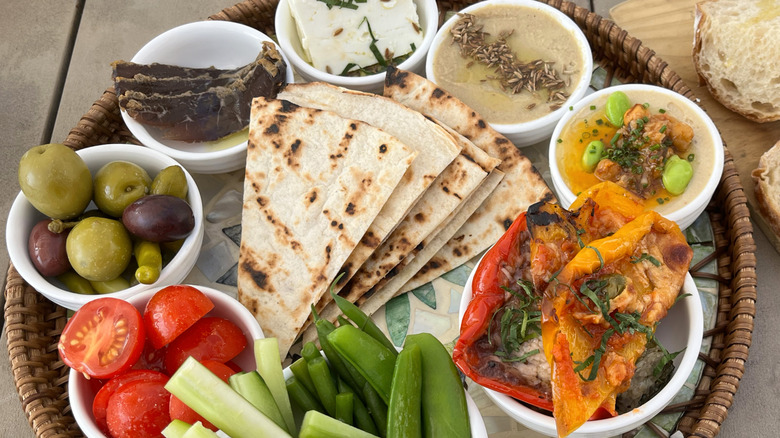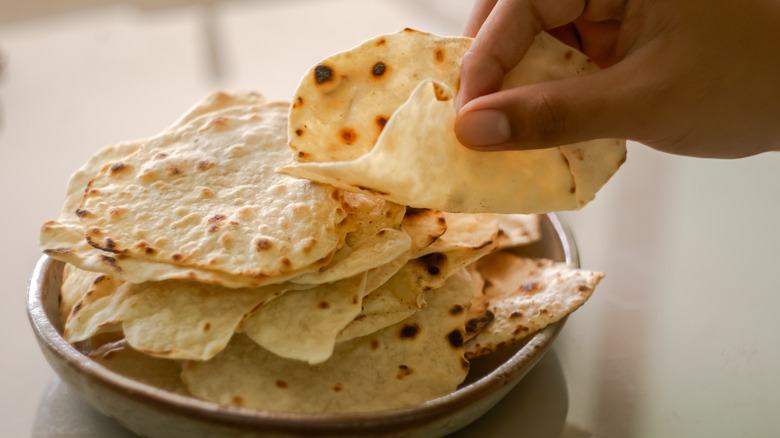What Is Unleavened Bread? Here's How To Make It Using Only 3 Ingredients
We may receive a commission on purchases made from links.
Bread is one of the oldest prepared foods (we're talking around 15,000 years old), so it's understandable that it comes in countless forms. One key distinction is whether bread is leavened or unleavened. Unleavened bread is a culinary staple in several cultures — think Mexican tortillas or South Asian roti (leavening agents are what make roti different from naan). It also holds deep religious significance, such as matzo, traditionally consumed by Jewish people during Passover (ever heard of matzo brei pizza?), and unleavened bread during the Eucharist by Christians. To find out what makes unleavened bread unique, Food Republic consulted Domenico Tolomeo, corporate chef at Orlando Food Sales.
He revealed, "Unleavened bread is made without any leavening agents (like yeast, baking powder, or sourdough starter) that produce gas and create an airy crumb. Because it doesn't rise, it's typically flat and dense." Texturally, unleavened bread differs from leavened bread, which is typically light, airy, and spongy due to air pockets — whereas, Tolomeo said, "Unleavened breads are usually thin, firm, or even crisp."
There's also variation among unleavened bread depending on how much water is added. "The shelf life can be longer if they're dry and cracker-like (low moisture prevents mold), but soft, moist unleavened breads can still spoil quickly if not stored properly," Tolomeo told us. So low moisture breads like matzo and lavash will usually last longer than their high-moisture counterparts like tortillas or roti.
Unleavened bread needs three simple ingredients
Unleavened bread can be whipped up using three common ingredients. According to Domenico Tolomeo, you only need, "2 cups Caputo Bread Flour, ½ cup of water, and ⅓ cup Olitalia Extra Virgin Olive Oil."
Each ingredient has a role. "Flour is the structure," Tolomeo explained, "The proteins form gluten when mixed with water, giving the bread some chew and flexibility." Water, logically, "hydrates the flour, forming a workable dough." And olive oil does more than just add rich, complex flavor; it also "[prevents] the bread from being too dry or brittle," he added. For depth, a pinch of salt enhances the dough's elasticity by strengthening gluten bonds, consolidating the chew of the bread. If you've got a sweet tooth, a drizzle of honey can be added to the mix.
You can also experiment with the taste and texture. For a cracker-like finish, roll the dough thin and "[use] a fork to poke a bunch of holes in the dough," Tolomeo told us. To replicate matzo, you may want to omit the oil, as it is traditionally made with only flour and water. These holes prevent steam buildup during cooking, which otherwise creates a puffier texture, like you see with roti. Kneading also plays a role: less kneading yields softer bread, while more develops gluten for a firmer bite. Also, adding more fat will affect your moisture content – just compare matzo (flour and water) to roti, which incorporates ghee or oil. Finally, have a go at elevating your flatbreads with other ingredients, like grilled peach and mozzarella for a sweet and savory twist.


